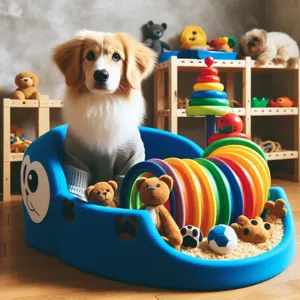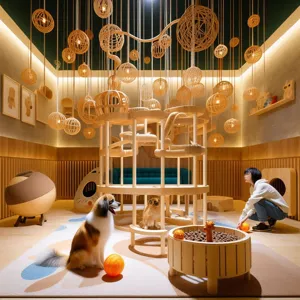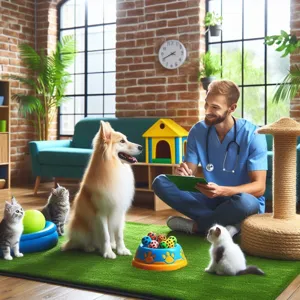In today’s world, where we spend a significant amount of time indoors, the quality of the air we breathe in our homes has never been more crucial.
Poor ventilation can lead to a buildup of pollutants, allergens, and excess moisture, which can adversely affect our health and well-being. Fortunately, enhancing your home’s ventilation doesn’t have to be a daunting task. With the right strategies, you can create a fresher, healthier living environment that promotes better air quality and comfort. From simple DIY solutions like strategically placed windows and fans to more advanced systems such as mechanical ventilation, this blog post will explore top strategies to breathe easy at home. Discover how to invite in fresh air, minimize indoor pollutants, and enjoy a rejuvenated atmosphere that supports your family’s health and happiness!
1. Understanding the Importance of Home Ventilation

Understanding the importance of home ventilation is crucial for creating a healthy and comfortable living environment. Ventilation is more than just letting fresh air in; it plays a vital role in regulating indoor air quality, controlling humidity levels, and preventing the buildup of harmful pollutants. Without adequate ventilation, your home can become a breeding ground for dust mites, mold, and allergens, which can adversely affect your health and wellbeing.
Proper ventilation helps to expel stale air filled with moisture and contaminants, replacing it with fresh outdoor air. This exchange not only reduces indoor air pollution but also helps to maintain a balanced atmosphere inside your home. For instance, kitchens and bathrooms, which generate humidity and strong odors, particularly benefit from well-designed ventilation systems that allow for the swift expulsion of vapors and smells.
Moreover, effective ventilation can enhance energy efficiency. By facilitating air circulation, you can reduce the reliance on heating and cooling systems, leading to lower energy bills and a reduced carbon footprint. In addition to these practical benefits, good ventilation contributes to the overall comfort of your home. It helps maintain consistent temperatures, minimizes drafts, and creates a more pleasant living space.
Ultimately, understanding the importance of home ventilation empowers homeowners to make informed decisions about their air quality and overall health. By prioritizing proper ventilation strategies, you can breathe easy, knowing that you are fostering a safe and welcoming environment for yourself and your family.
2. Common Signs of Poor Ventilation
Recognizing the signs of poor ventilation in your home is crucial for maintaining a healthy and comfortable living environment. If you’re experiencing any of the following indicators, it may be time to assess your ventilation system and make necessary improvements.
**1. Stale or Musty Odors:** One of the most telling signs of inadequate ventilation is the presence of persistent stale or musty smells. This unpleasant odor often indicates trapped moisture and stagnant air, which can lead to the growth of mold and mildew, posing health risks to your family.
**2. Excess Humidity:** If you find that your home feels overly humid—especially in areas like the bathroom or kitchen—this can signal poor airflow. High humidity levels can lead to discomfort, promote mold growth, and even damage your home’s structure over time. Look for condensation on windows or walls as additional clues.
**3. Temperature Fluctuations:** A well-ventilated home should maintain a consistent temperature throughout. If you notice significant temperature differences between rooms or struggle to keep your home cool in the summer and warm in the winter, it may be due to inadequate ventilation preventing proper air circulation.
**4. Increased Allergies or Respiratory Issues:** If you or your family members experience heightened allergies, asthma symptoms, or respiratory issues, poor ventilation might be a contributing factor. Pollutants, allergens, and irritants can accumulate in stagnant air, exacerbating health problems.
**5. Frequent Condensation:** Regular condensation on windows or walls can indicate that your home is not effectively ventilated. This moisture can promote mold growth and damage materials like wood and drywall, leading to costly repairs.
**6. High Energy Bills:** If your energy bills seem unusually high, it could be because your heating and cooling systems are working overtime to compensate for inadequate ventilation. Poor airflow can cause your HVAC system to run less efficiently, leading to increased energy consumption and costs.
Being aware of these common signs of poor ventilation can empower you to take action before issues escalate. By addressing these concerns, you can ensure that your home remains a safe, comfortable, and healthy space for you and your loved ones.
3. Assessing Your Current Ventilation System

Before implementing any new ventilation strategies, it’s crucial to take stock of your existing system. Assessing your current ventilation setup is the first step toward creating a healthier indoor environment. Begin by inspecting the various components of your ventilation system, including exhaust fans, air ducts, and vents. Look for any signs of wear and tear, blockages, or accumulated dust and debris, which can significantly hinder airflow and reduce efficiency.
Pay special attention to the air quality in different rooms. Are there areas that feel stuffy or damp? Do you notice any unpleasant odors? These clues can help pinpoint specific problem areas that need immediate attention. Additionally, consider the age and type of your system. Older systems may not meet modern standards for efficiency and air quality, which could warrant an upgrade or replacement.
Don’t forget to evaluate the balance of airflow throughout your home. Effective ventilation should promote a steady exchange of stale air with fresh outdoor air, ensuring that every room is adequately circulated. This is particularly important in high-humidity areas, such as bathrooms and kitchens, where moisture can build up and lead to mold growth if not properly vented.
Document your findings and create a checklist of necessary repairs or upgrades. This assessment will not only empower you with the knowledge needed to enhance your home’s ventilation but also guide you in making informed decisions as you explore further improvements. Remember, a well-ventilated home is not just about comfort; it’s about fostering a safe and healthy living environment for you and your family.
4. Natural Ventilation: Harnessing Fresh Air
Natural ventilation is one of the most effective and eco-friendly ways to enhance your home’s air quality while minimizing energy costs. By harnessing the power of fresh air, you can create a comfortable living environment that promotes well-being and reduces reliance on mechanical systems. This strategy involves allowing outdoor air to flow into your home, diluting indoor pollutants, and bringing in the refreshing scents of nature.
To effectively implement natural ventilation, start by identifying the airflow patterns in your home. Open windows strategically to create cross-ventilation—this occurs when air enters through one opening and exits through another, facilitating a continuous flow of fresh air. For optimal results, consider the placement of windows and doors; if possible, align openings to take advantage of prevailing winds.
Incorporating features such as vents, skylights, and operable windows can also enhance natural airflow. Skylights, for example, not only allow sunlight to brighten your space but can also be opened to release hot air that rises, further improving ventilation. Additionally, installing window screens can keep pesky insects at bay, encouraging you to keep windows open longer.
Don’t forget about the power of landscaping! Trees and shrubs can provide shade and cooling breezes when placed strategically around your home. This balance of sun and shade can help maintain a comfortable indoor temperature, encouraging you to open your windows more frequently.
Lastly, be mindful of the indoor air quality during seasonal changes. In the spring and fall, when outdoor temperatures are mild, take advantage of these conditions to refresh your indoor air. On the other hand, during peak pollen seasons or high humidity days, you might choose to limit outdoor airflow for better comfort.
By embracing natural ventilation, not only will you improve the air quality in your home, but you will also enjoy the benefits of a more sustainable and energy-efficient living space. Fresh air is just a window away!
5. Mechanical Ventilation: Choosing the Right System

When it comes to enhancing your home’s ventilation, mechanical ventilation systems can be a game changer. These systems actively introduce fresh air into your living spaces while simultaneously expelling stale air, ensuring a continuous flow that promotes a healthier indoor environment. However, not all mechanical ventilation systems are created equal, and selecting the right one for your home requires careful consideration of several key factors.
Start by assessing your home’s size and layout. Larger spaces may benefit from a centralized ventilation system, which uses ducts to distribute air evenly throughout the house. On the other hand, if your home is smaller or has unique architectural features, a decentralized system, such as wall-mounted units or window ventilators, may be more appropriate. The goal is to ensure that every room receives adequate airflow without creating drafts or overly dry conditions.
Next, consider the specific needs of your household. If you live in a particularly humid area or have family members with allergies, a heat recovery ventilator (HRV) or energy recovery ventilator (ERV) can help manage moisture levels while filtering out allergens and pollutants. These systems not only improve air quality but also recycle energy, making them an eco-friendly choice.
Finally, installation and maintenance are crucial components of your decision-making process. Professional installation is often recommended to ensure optimal performance and compliance with local building codes. Additionally, make sure to inquire about the maintenance requirements of the system you choose. Regular filter changes and inspections are essential to keep your ventilation system running efficiently and to prolong its lifespan.
By carefully evaluating your home’s needs and the available options, you can select a mechanical ventilation system that not only improves air quality but also contributes to the overall comfort and health of your living environment. With the right system in place, you’ll be one step closer to creating a breath of fresh air in your home.
6. Enhancing Airflow with Ceiling Fans and Exhaust Fans
Enhancing airflow in your home can significantly improve indoor air quality and comfort, and incorporating ceiling fans and exhaust fans into your ventilation strategy is a smart and effective way to achieve this.
**Ceiling Fans:** These versatile fixtures do more than just add a stylish touch to your decor; they can create a gentle breeze that helps distribute air evenly throughout a room. By setting your ceiling fans to rotate counter-clockwise during warmer months, you can create a wind-chill effect that makes the space feel cooler. In winter, simply switch the direction to clockwise to circulate warm air that tends to rise to the ceiling. This dual functionality makes ceiling fans a year-round ally in maintaining a comfortable home environment. For maximum effectiveness, consider placing fans in key locations like living rooms, bedrooms, and dining areas to ensure optimal airflow throughout your living spaces.
**Exhaust Fans:** While ceiling fans enhance airflow within rooms, exhaust fans play a crucial role in improving air quality by expelling stale or humid air. Typically installed in kitchens and bathrooms, these fans help eliminate odors, smoke, and moisture that can lead to mold growth. When cooking, turning on the kitchen exhaust fan can quickly remove smoke and cooking odors, making your home more pleasant. In bathrooms, exhaust fans help to reduce humidity levels after showers, protecting your walls and fixtures from damage. For the best results, ensure that your exhaust fans are adequately sized for the space and are used regularly during activities that produce excess moisture or odors.
By thoughtfully integrating ceiling fans and exhaust fans into your home, you can create a harmonious airflow that not only keeps your indoor environment comfortable but also promotes overall health and well-being. The combination of these two elements will not only enhance ventilation but also help you breathe easy in your sanctuary.
7. The Role of Windows and Doors in Ventilation

When it comes to enhancing your home’s ventilation, the role of windows and doors cannot be overstated. These structural elements act as the gateways for fresh air, helping to circulate and refresh the indoor atmosphere. Not only do they allow for natural airflow, but strategically placed windows and doors can also significantly improve the overall energy efficiency of your home.
First, consider the type of windows you have. Casement windows, which open outward, create a larger opening than sliding windows, allowing for optimal airflow. Meanwhile, awning windows can provide ventilation even during light rain, keeping your home airy without compromising on protection. On the other hand, double-hung windows allow you to open both the top and bottom sashes, facilitating a natural chimney effect that pulls cool air in from below while letting warm air escape from above.
Doors, too, play a critical role in ventilation. Installing doors with glass panels can enhance the flow of light and air, while screen doors allow you to enjoy a fresh breeze without the intrusion of insects. French doors, which open wide, can create a welcoming cross-breeze when opened in conjunction with other windows. Additionally, ensuring that all doors and windows are properly sealed will prevent drafts and ensure that your home retains its conditioned air, maximizing the effectiveness of your ventilation strategy.
Beyond their functional capabilities, windows and doors also contribute to the aesthetic appeal of your home. Larger, strategically positioned windows can provide stunning views and create a sense of openness, making your space feel more inviting and connected to the outdoors. Consider using operable designs that encourage the flow of air, while also selecting styles that complement your home’s architecture.
Ultimately, the proper selection and placement of windows and doors can dramatically improve your home’s ventilation. By prioritizing these elements, you can create a fresh and comfortable living environment that not only enhances air quality but also elevates your overall well-being. So, open up those windows and doors, and let the fresh air in!
8. Utilizing Air Purifiers for Improved Indoor Air Quality
In the quest for a healthier home environment, utilizing air purifiers has emerged as a pivotal strategy for enhancing indoor air quality. These devices work tirelessly to filter out allergens, dust, pet dander, smoke, and even harmful pollutants, creating a sanctuary free from invisible irritants. With a plethora of options available on the market, selecting the right air purifier can significantly impact your overall well-being.
When choosing an air purifier, look for models equipped with HEPA (High-Efficiency Particulate Air) filters, which can trap up to 99.97% of particles as small as 0.3 microns. This level of filtration ensures that even the tiniest allergens are captured, allowing you and your family to breathe easier, especially during allergy season or in urban environments where air quality can be compromised.
Moreover, many modern air purifiers come with additional features like activated carbon filters, which effectively neutralize odors from cooking, pets, or smoking. Some models even include UV-C light technology, providing an extra layer of protection by eliminating bacteria and viruses in the air.
Placement is key when it comes to maximizing the efficiency of your air purifier. Positioning it in high-traffic areas or bedrooms will ensure that the air you breathe is consistently filtered and purified. Additionally, consider using multiple units throughout your home to cover larger spaces or open floor plans, allowing for comprehensive air circulation and purification.
Regular maintenance is also crucial; remember to change the filters as recommended by the manufacturer to keep your air purifier functioning at peak performance. By incorporating air purifiers into your home, you not only enhance your indoor air quality but also contribute to a healthier living space, making it easier for you and your loved ones to breathe easy every day.
9. Sealing and Insulating Your Home for Better Ventilation
When it comes to improving your home’s ventilation, sealing and insulating may not be the first strategies that come to mind. However, these steps are crucial in creating a balanced airflow while maintaining energy efficiency. Poorly sealed homes can lead to drafts and unwanted heat loss, making your HVAC system work harder and potentially compromising the quality of your indoor air.
Start by inspecting your home for gaps and cracks around windows, doors, and other openings. These small leaks can be responsible for significant air loss over time. Use high-quality caulk or weather stripping to seal these areas, preventing outside air from infiltrating your living space. Not only will this help maintain a consistent indoor temperature, but it will also enhance your home’s overall comfort.
Next, consider the insulation within your walls, attic, and basement. Proper insulation acts as a barrier to heat transfer, ensuring that cool air from your ventilation system remains inside during the summer months, while also keeping the warmth during winter. An adequately insulated home minimizes the workload on your heating and cooling systems, which can lead to lower energy bills over time.
In addition to sealing and insulating, it’s essential to ensure that your ventilation system is balanced. This means that the air entering and leaving your home is in harmony, preventing pressure imbalances that can lead to poor indoor air quality. A well-sealed and insulated home allows for controlled ventilation, enabling you to introduce fresh air without compromising energy efficiency.
By focusing on sealing and insulating, you’re not just enhancing your home’s ventilation; you’re creating a healthier living environment for you and your family. Improved air quality, reduced energy costs, and increased comfort are just a few benefits that come from these essential strategies. Take the time to invest in these areas, and you’ll breathe easier knowing your home is both efficient and well-ventilated.
10. Incorporating Houseplants for Natural Air Filtration
Incorporating houseplants into your home not only adds a touch of natural beauty but also serves as an effective strategy for enhancing indoor air quality. Certain plants have remarkable abilities to filter and purify the air, making them an essential component of any ventilation improvement plan.
Varieties such as the peace lily, spider plant, and snake plant are renowned for their air-purifying properties. The peace lily, with its elegant white blooms, excels at removing common pollutants like formaldehyde and benzene, while the spider plant is a resilient choice that thrives in various conditions and can eliminate harmful chemicals like xylene and toluene. The snake plant, known for its striking, upright leaves, releases oxygen at night, making it a perfect option for bedrooms.
To maximize the benefits of your indoor garden, strategically place these plants in areas where air circulation is limited or where pollutants may accumulate. For example, placing a few spider plants in your kitchen can help combat cooking odors and fumes, while peace lilies in your living areas will not only purify the air but also add to the aesthetics of your space.
Beyond their air-filtering capabilities, houseplants can contribute to improved humidity levels, creating a more comfortable environment. This is especially important in winter months when heating systems can dry out indoor air. By adding greenery to your home, you create a more inviting atmosphere that promotes relaxation and well-being.
Moreover, caring for houseplants can be a rewarding hobby that connects you to nature, enhances your mood, and even reduces stress. As you nurture these living organisms, you’ll find yourself more mindful of your indoor environment—prompting you to create a home that not only breathes easier but also feels alive. Embrace the power of houseplants, and let them work their magic in transforming your home into a fresher, healthier haven.
11. Regular Maintenance Tips for Ventilation Systems
Regular maintenance of your ventilation systems is crucial for ensuring optimal airflow and maintaining a healthy indoor environment. Just like any other system in your home, your ventilation requires attention and care to function efficiently and effectively. Here are some essential tips to keep your ventilation systems in top shape:
1. **Change Filters Regularly**: One of the simplest yet most impactful maintenance tasks is replacing air filters. Clogged or dirty filters can restrict airflow and reduce the efficiency of your system, leading to higher energy bills and poor air quality. Aim to check and replace filters every 1-3 months, depending on usage and the type of filters you have.
2. **Clean Ducts and Vents**: Dust and debris can accumulate in your ducts and vents over time, obstructing airflow and potentially leading to respiratory issues. Schedule a professional duct cleaning every 3-5 years, or more frequently if you have pets or live in a dusty area. Additionally, vacuum and clean the vent covers regularly to prevent blockages.
3. **Inspect for Leaks**: Leaky ducts can significantly diminish the efficiency of your ventilation system. Regularly inspect visible ductwork for any signs of wear or damage, such as holes or disconnected sections. Sealing these leaks with appropriate duct tape or mastic can help maintain optimal airflow and energy efficiency.
4. **Check Exhaust Fans**: Ensure that kitchen and bathroom exhaust fans are functioning properly. These fans help remove moisture, odors, and pollutants from your home. Clean fan covers and make sure that vents are free from obstructions. If a fan is not operating efficiently, consider replacing it to improve ventilation.
5. **Monitor Humidity Levels**: High humidity can lead to mold growth and poor indoor air quality, while low humidity can dry out your respiratory system. Use a hygrometer to monitor humidity levels and consider using a dehumidifier or humidifier as needed. Proper humidity control is essential for a well-ventilated home.
6. **Schedule Professional Inspections**: Finally, don’t underestimate the value of professional maintenance. Annual inspections by a qualified HVAC technician can identify potential issues before they become costly repairs. Technicians can also perform thorough cleanings and tune-ups, ensuring your ventilation system operates at peak performance.
By incorporating these simple maintenance tips into your home care routine, you can enhance your ventilation system’s efficiency, ensure cleaner air, and create a healthier living environment for you and your family. Regular upkeep not only prolongs the life of your system but also promotes overall comfort in your home.
12. Seasonal Ventilation Strategies: Adapting to Weather Changes
Maintaining optimal ventilation in your home requires a flexible approach that adapts to the ever-changing seasons. As the weather shifts, so should your ventilation strategies to ensure a comfortable, healthy living environment year-round.
### Spring: Embrace the Fresh Air
As the chill of winter fades, spring invites a breath of fresh air. Take advantage of the mild temperatures by opening windows and doors to create cross-ventilation. This natural airflow not only brings in fresh oxygen but also helps to remove any lingering odors or stale air from winter. Consider using window screens to keep insects out while still enjoying the gentle breeze. To further enhance your home’s ventilation during spring, consider installing operable skylights or vents in attics and upper floors, allowing hot air to escape and cool air to flow in.
### Summer: Manage Heat and Humidity
Summer can bring intense heat and humidity, which can lead to discomfort if your home isn’t properly ventilated. During the hottest parts of the day, close windows and blinds to keep the heat out, and use exhaust fans in kitchens and bathrooms to expel warm, humid air. In the cooler mornings and evenings, open windows to create a flow of cooler air. Ceiling fans can help circulate the air, making it feel more refreshing without relying solely on air conditioning. For those particularly sticky days, consider using a dehumidifier to control moisture levels, which not only enhances comfort but also helps prevent mold growth.
### Fall: Prepare for the Chill
As autumn approaches and temperatures begin to drop, it’s time to shift your focus to maintaining warmth while ensuring adequate ventilation. Make sure to clean and inspect your heating system and ensure that vents and registers are unobstructed to promote efficient airflow. Open windows during the day when temperatures are still pleasant to let in fresh air, but be prepared to close them as the evenings cool down. It’s also a good time to check for drafts around windows and doors; sealing these gaps will help maintain your indoor temperature and reduce heating costs.
### Winter: Ventilation Without the Chill
In winter, keeping your home warm can often compromise ventilation, leading to stale air and potential indoor air quality issues. However, proper ventilation is still crucial even in the colder months. Use exhaust fans wisely to remove moisture from cooking and bathing, and consider an energy recovery ventilator (ERV) or heat recovery ventilator (HRV) system to balance fresh air intake with heat retention. These systems can help you bring in clean air without losing precious heat. Additionally, ensure that your home is equipped with adequate insulation to prevent drafts while maintaining airflow.
By adapting your ventilation strategies to the seasons, you can create a comfortable and healthy home environment that responds to the unique challenges presented by each time of year. Whether it’s embracing the fresh breezes of spring or managing the dry air of winter, thoughtful ventilation will help you breathe easy all year round.
13. The Impact of Humidity on Ventilation and Air Quality
Humidity plays a crucial role in the overall ventilation and air quality of your home, affecting not only comfort but also health and structural integrity. High humidity levels can lead to a range of issues, from mold growth and dust mites to a general feeling of mustiness that can permeate your living spaces. When the air is saturated with moisture, it can make even the most well-ventilated homes feel stuffy and uncomfortable.
Conversely, low humidity can lead to dry skin, irritated airways, and increased susceptibility to respiratory issues. It can also exacerbate allergies and asthma, making it vital to strike the right balance. Ideally, indoor humidity levels should be maintained between 30% and 50%.
To effectively manage humidity, consider using exhaust fans in moisture-prone areas like kitchens and bathrooms. These fans help to expel excess moisture generated from cooking, showering, or washing dishes, preventing it from lingering in the air. Additionally, investing in a dehumidifier can be a game-changer, particularly in basements or other damp areas of your home.
On the flip side, if you live in a dry climate, you may benefit from a humidifier to add moisture back into the air, enhancing comfort while protecting wooden furniture and maintaining the proper humidity levels essential for healthy breathing.
Furthermore, ensuring your home is well-insulated and sealed can prevent outdoor humidity from infiltrating your space, while strategically placed houseplants can naturally regulate humidity levels and improve air quality. By understanding and managing humidity, you can greatly enhance your home’s ventilation, leading to a fresher, healthier living environment.
14. DIY Ventilation Improvements: Cost-Effective Solutions
When it comes to enhancing your home’s ventilation, you don’t always need to rely on costly renovations or professional installations. There are plenty of DIY ventilation improvements that can make a significant impact on your indoor air quality without breaking the bank. Here are some cost-effective strategies to consider:
**1. Seal Leaks:** Start by inspecting your home for any air leaks around windows, doors, and ductwork. Use weatherstripping or caulk to seal gaps and prevent unwanted air exchange. This simple task not only improves ventilation efficiency but also helps regulate temperature and reduce energy bills.
**2. Install Exhaust Fans:** Adding exhaust fans in key areas such as the kitchen and bathroom can help expel stale air and moisture. These fans are relatively inexpensive and easy to install, providing immediate relief from cooking odors or humidity after a hot shower.
**3. Create Cross-Ventilation:** Take advantage of natural airflow by opening windows on opposite sides of your home to create cross-ventilation. This approach allows fresh outdoor air to flow through and push out stale indoor air. To enhance this effect, consider using strategically placed fans to help circulate air throughout the space.
**4. Use Air Purifying Plants:** Incorporating indoor plants that are known for their air-purifying qualities can enhance your home’s atmosphere while improving ventilation. Plants like spider plants, snake plants, and peace lilies not only add a touch of greenery but also help filter harmful pollutants.
**5. Clean Air Filters and Vents:** Regular maintenance of your HVAC system is crucial for optimal ventilation. Clean or replace air filters every few months to ensure air flows freely and efficiently. Take the time to dust and clean vents and registers, which can become clogged with dirt and debris over time.
**6. Utilize Attic and Roof Ventilation:** If you’re comfortable working in your attic, consider adding or improving attic vents to enhance airflow. Proper attic ventilation helps regulate temperatures and prevents moisture buildup, which can lead to mold growth and structural damage.
By taking these DIY steps, you can create a healthier living environment that promotes fresh air circulation and reduces indoor pollutants. Not only will these improvements breathe new life into your home, but they’ll also contribute to your overall well-being without putting a strain on your wallet. So roll up your sleeves and start implementing these cost-effective solutions—your lungs will thank you!
15. When to Call in the Professionals for Ventilation Issues
While some ventilation issues can be tackled with DIY solutions or minor adjustments, there are times when it’s crucial to call in the professionals. Recognizing these moments can save you time, money, and stress in the long run.
One key indicator that you should reach out to an expert is persistent bad odors. If you notice musty smells or a foul odor that lingers despite regular cleaning, this could signal underlying mold or mildew issues, often linked to poor ventilation. Professionals can assess the situation thoroughly and provide effective solutions to eliminate these odors at their source.
Another critical reason to consult a ventilation specialist is when you experience consistent temperature fluctuations in your home. If certain rooms are too hot in the summer or too cold in the winter, it may indicate that your ventilation system is not functioning properly. An expert can identify imbalances in airflow and recommend adjustments or upgrades to your system to ensure a more comfortable environment throughout your home.
Additionally, if you find that your energy bills are skyrocketing without explanation, it’s time to call in the pros. Inefficient ventilation can lead to higher energy consumption as your heating and cooling systems work overtime to compensate for poor airflow. A ventilation professional can conduct an energy audit and suggest improvements that not only enhance air quality but also reduce your monthly expenses.
Lastly, if you’re planning to undertake major renovations or modifications to your home, consulting a ventilation expert is essential. They can provide guidance on how to maintain or improve ventilation during construction to ensure that your home remains healthy and comfortable for years to come.
In summary, knowing when to call in the professionals can make all the difference in maintaining a well-ventilated home. Keep an eye out for persistent odors, temperature inconsistencies, rising energy bills, or major renovations—these are signs that professional assistance is warranted. Don’t hesitate to reach out; investing in expert help can lead to a healthier, more comfortable living space for you and your family.
In conclusion, enhancing your home’s ventilation is a vital step toward creating a healthier and more comfortable living environment. By implementing the strategies discussed in this article—from optimizing natural airflow to investing in advanced ventilation systems—you can significantly improve indoor air quality and reduce allergens and pollutants. Remember, effective ventilation not only promotes better respiratory health but also contributes to energy efficiency and overall home well-being. As you embark on this journey to breathe easy, take small, consistent steps towards improvement, and enjoy the fresh, clean air that fills your home. Here’s to a healthier, happier living space!











